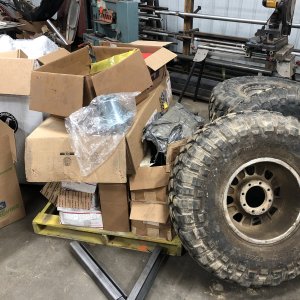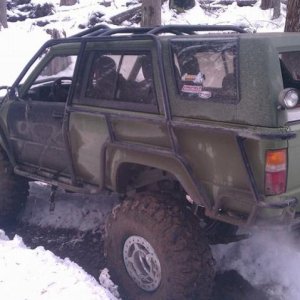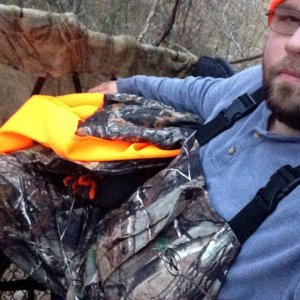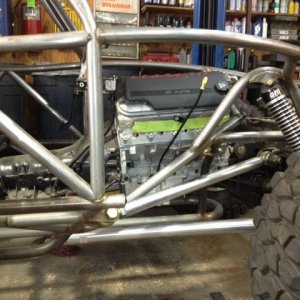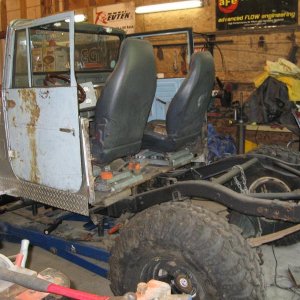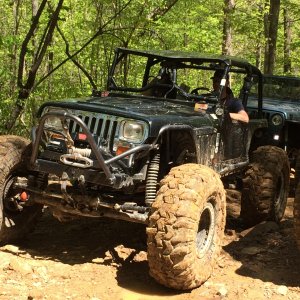slravenel said:
-P pump is the big block of steering. Its big, its slow, sometimes loud, but it will get you down the road every time. And cheaply usually.
-TC pump is the SBC. It used to be all the jam, but now its outdated. Makes alot of noise, not as much power as it should. Will give out eventually and cant keep up with the rest of the bling parts out today.
-CBR pump is the LS. It is reliable, great power, works in all ranges of RPM. It is the good one of the bunch.
The P Pump will pump all you want and get you going. IF you have the room to mount one.
The TC pump is small and easy to mount, but in order to make the right amount of pressure...you have to rev them up high (or run a different size pulley that will eventually kill it). For what it is worth...the TC pumps (on one ton rigs...they work great on smaller buggies and toyotas, etc) have kinda ended up in rear steer only applications by most reputable shops.
The CBR pump is the one that you want. It is more $$ than the P or TC though. But steering isnt something I want to cheap out on.
I'm sorry but this is so wrong I have to say something.
First, displacement and pressure are two different things. Displacement equates to speed. If your orbital is big and your steering gets stiff when you turn fast you need a pump with more displacement.
Pressure equates to power. If your steering is weak all the time and you have a hard time steering when bound up you may need more pressure.
Pressure doesn't vary greatly among most manufacturers. Most stock truck pumps will be around 1100-1300 psi and aftermarkets can improve on that up to around 1600 psi. Much further than that though the back caps tend to blow off so that seems to be the ceiling. All the pumps can be built to have any pressure within those ranges that the builder wishes. That means there is no pressure or power advantage to any of them. If you feel that one is 'weaker" than the other it is only because the bypass valve is set at a lower pressure in one of them.
P-pumps offered 3 displacement options back in the day. Low, medium, high. High was only ever used in medium-duty trucks like Topkicks and Kodiaks. The high displacement pump used the same ring and vanes as the medium-displacement pump. It just had a bigger reservoir and more efficient intake setup to supply greater output. That means that the medium displacement pump simply bypassed more output back to the input side using the same ring. That's why you won't find the big pumps easily since you can put the medium internals in a very common low output housing (with a different back plate) to achieve basically the same thing. Pretty much any aftermarket p-pump you buy today will have the medium / high ring & vanes in a low / medium housing with modifications made to the bypass valve and intake tract to supply higher output pressure and displacement. The medium p-pump was found mainly on 3/4 and 1-ton trucks. The low output p-pump was found on most everything else. HOWEVER, even if you have a 1-ton truck, ALL reman pumps available today use the low output ring and vanes. You simply can not buy the larger ring and vanes at a parts store any more, it is impossible. The only way to get them is to either buy the larger pump that fits Topkicks or buy an aftermarket pump.
CB pumps use a ring and vanes almost identical in size to the low-output p-pump. So they will have similar output as the smaller p-pump. Not really much else to say about them.
Both P and CB use two oiled bushings at the front of the shaft to support their loads. They receive their oil supply from the HP side of the pump The fact that only the front of the shaft is supported means that the back (where all the internals are attached to) has to be balanced in terms of forces that it produces or it will apply an uneven load and bend or break the shaft.
TC has the smallest vane / ring assembly of all the pumps so it will have the lowest displacement. BUT it is the most robustly built pump of all 3 and, in my experience, suffers a lower failure rate as a result. Both the front and rear of the shaft are supported by bearings. This is why it is so robust and can also generally be spun faster than the P. Nearly all Nascar teams are running highly modified TC pumps because they are are high displacement vehicles but can live under constant high rpms.
ALL steering pumps are physically capable of displacing more than they output. This excess displacement is recirculated back to the input side to compliment the intake. To make a pump that displaces more at the output is simply taking away some of the recirculation. This means that the intake side needs to get that lost fluid from somewhere else. A lot of what aftermarket companies are doing is trying to make the intake more efficient or bigger to make up for the lost intake volume.
All pumps make noise if they are starved of intake volume. There is nothing about the design of one or the other that makes it more or less noisy other than possibly more or less efficient intake.
CBR is the newest version, I think they started coming on the high performance cars in 2010 or thereabouts. I haven't been inside of one yet but it appears to be the same displacement as a regular CB pump with a beefed up back plate to accommodate higher pressures in the 1600-1800 psi range. So if power is a big concern CBR seems to be the best candidate currently. It also has a big fat cast boss at the intake fitting that makes it easy for aftermarket companies to enlarge and weld AN fittings to. If your biggest concern is speed though there is no replacement for displacement, which makes the P your best candidate. CBR probably is the best compromise of both right now.
A lot boils down to economics, too. Saginaw no longer produces the TC cast housing. So they are difficult to procure which, I feel, is why some companies discourage customers from them. CBR is what Saginaw is producing by the ship-load right now and what is easy and cheap for aftermarket companies to get a hold of.
For a while some companies were pushing the N-pump which was basically a small displacement P with a housing that was designed for external reservoir instead of a ham-can. Once the CBr was made easily available they dropped the N with quickness.
I can go on and on. I've taken apart and studied probably about 20 OEM, reman, and aftermarket pumps to learn all of this. It was an obsession of mine for a long time. Still is kind of. I would love to get a hold of some CBr's to look inside of.



